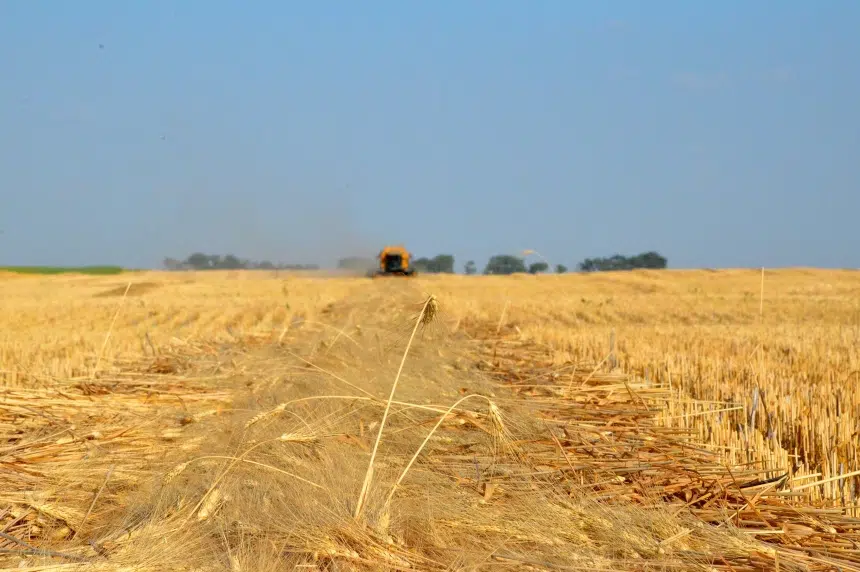A reported 20 per cent of the crop in Saskatchewan is now in the bin, according to the latest crop report.
Farmers across the province are busy preparing equipment and bins for harvest, swathing, desiccating crops and combining which is well underway. The report said the weather this week has given producers a chance to keep harvest progressing, with the amount completed well ahead of the five-year average of four per cent.
Five per cent of the crop is swathed and 14 per cent is ready to straight combine, also ahead of the five-year average of seven per cent.
According to some producers, yields are worse than expected. Some who got timely rain, however, are reporting closer to average yields.
Winter wheat is at 83 per cent combined, fall rye is at 75 per cent and field peas and lentils are at 64 per cent. Barley is at 25 per cent and 13 per cent of spring wheat has been combined. Twelve per cent of canola has either been swathed or is ready to straight-cut.
Regions are at various progressions of combining: southwest (34 per cent), southeast (22 per cent), west central (18 per cent), northeast (14 per cent), east central (13 per cent) and northwest (seven per cent). In the southern regions, some producers are reportedly more than halfway done harvest.
Rain received now won’t make any difference in this year’s crop yield and will delay harvest for producers, though they are happy to finally see rain. There wasn’t much significant rainfall this week, with the most precipitation recorded in the Lipton area (20 millimetres). The Meacham area received 11 mm, the Nipiwin area received eight, Raymore seven and Bigger, three.
Pastures without cattle, however, will benefit from rain and see some recovery from this year’s severe drought.
Cropland topsoil moisture is rated as four per cent adequate, 29 per cent short and 67 per cent very short. Hay and pasture land topsoil moisture is rated as two per cent adequate, 21 per cent short and 77 per cent very short.
Crop damage caused this week remains the same — most was caused by wind, heat, drought stress, gophers and insects like grasshoppers and flea beetles.
Farmers are reminded to use caution during harvest while moving machinery and equipment across major highways. Fire concerns are high and farmers are reminded to ensure firefighting equipment is close at hand to stop and combine or field fires. SaskPower is reminding producers to steer clear of power lines and poles and to use caution in areas where they may be placed.
Support for Saskatchewan producers
An announcement by the province last week shared that the AgriRecovery response would help provide payment per head to help maintain female breeding stock in Saskatchewan. Details and further information on this initiative are still to come. The federal and provincial governments have increased the 2021 AgriStability interim benefit percentage from 50 to 75 per cent for Saskatchewan producers, allowing them to access their benefits early.
In response to the feed shortage this year, producers are reminded that SCIC has doubled the Low Yield Appraisal threshold values for customers who salvage their cereal or pulse crops as feed. This will not have a negative effect on future individual coverage, though customers are asked to contact their local SCIC office before they graze, bale or silage any damaged crops to discuss their options.
The Government of Saskatchewan has also made changes to temporarily increase the maximum funding livestock producers can receive from the Farm and Ranch Water Infrastructure Program for dugouts, wells and pipelines for agricultural use.
A support line for producers, the Farm Stress Line, is available at all hours of the day, every day at 1-800-667-4442. Calls are anonymous and answered by Mobile Crisis Services Regina.







